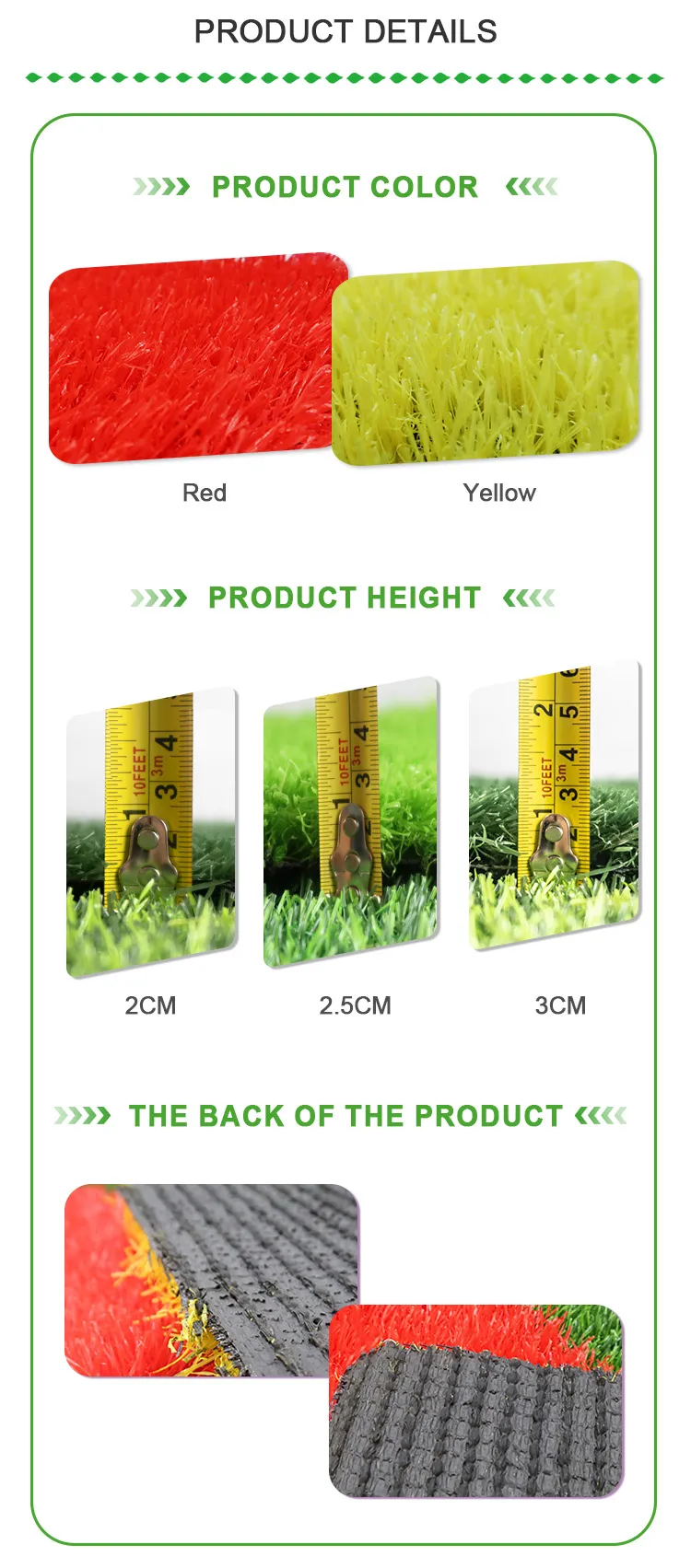
- Afrikaans
- Arabic
- Belarusian
- Bengali
- Czech
- Danish
- Dutch
- English
- Esperanto
- Estonian
- Finnish
- French
- German
- Greek
- Hindi
- Hungarian
- Icelandic
- Indonesian
- irish
- Italian
- Japanese
- kazakh
- Rwandese
- Korean
- Kyrgyz
- Lao
- Latin
- Latvian
- Malay
- Mongolian
- Myanmar
- Norwegian
- Persian
- Polish
- Portuguese
- Romanian
- Russian
- Serbian
- Spanish
- Swedish
- Tagalog
- Tajik
- Thai
- Turkish
- Turkmen
- Ukrainian
- Urdu
- Uighur
- Uzbek
- Vietnamese
cost of field turf football field
Dec . 17, 2024 09:58 Back to list
The Cost of Field Turf Football Fields An In-Depth Analysis
Field turf has become a popular choice for many football programs, from high schools to professional leagues. This synthetic alternative to natural grass offers durability, reduced maintenance costs, and year-round usability. However, the initial investment required for installing a field turf football field can be significant. In this article, we will explore the factors influencing the cost of field turf installations, the benefits it provides, and the potential long-term savings it can generate for football programs.
Understanding the Cost Breakdown
The cost of a field turf football field can range widely, typically between $500,000 to $1.5 million, depending on various factors. One of the primary determinants is the type of turf chosen. There are several grades and types of synthetic grass available, ranging from basic options that mimic natural grass to high-end products designed for professional sports. Generally, more advanced materials and technologies used in creation will lead to higher costs.
Another significant factor is the size of the field. A standard American football field measures approximately 100 yards in length and 53 yards in width, but when considering end zones and other safety areas, the total square footage increases. This larger size drives up the material and installation costs. Additionally, local labor costs can vary dramatically, affecting the total expenditure.
Preparation of the site is another vital aspect influencing the overall cost. Existing natural grass fields may require extensive work, such as grading, drainage installation, and soil replacement, before turf can be laid down. The costs associated with these preparatory steps can add thousands to the initial budget.
Advantages of Field Turf
While the initial costs may seem steep, many football programs find that the benefits of installing field turf ultimately justify the expense. Field turf offers a uniform playing surface, which can greatly reduce the risk of injuries commonly associated with uneven natural grass fields. This improved safety is a critical consideration for coaches and parents alike.
cost of field turf football field

Moreover, field turf requires significantly less maintenance than natural grass. Traditional grass fields demand regular mowing, watering, fertilizing, and pest control. In contrast, synthetic turf needs minimal upkeep; a simple brushing and periodic cleaning to remove debris is usually sufficient. This reduction in labor and maintenance costs can lead to substantial savings over time.
Field turf also allows for more flexible use of the playing surface. Because it can withstand heavier foot traffic and adverse weather conditions, schools can host additional games, practices, and events without worrying about field damage. This increased usability can attract more events and revenue, further offsetting the initial investment.
Long-Term Economic Impact
Investing in a field turf football field can yield long-term economic benefits for educational institutions and communities. Not only does it enhance the performance and safety of athletes, but it can also extend the lifespan of the playing surface to over 10 years, often up to 15 years with proper care. Given that a natural grass field may need to be completely replaced every 3-10 years, the long-term savings can be quite substantial.
Communities also benefit from the increased use of field turf facilities. Local businesses may see an uptick in traffic as events draw spectators who dine, shop, or stay in nearby hotels. Additionally, schools can rent out their fields for practices and games, generating additional revenue.
Conclusion
While the cost of installing a field turf football field can be daunting, a thorough analysis reveals that the long-term benefits often outweigh the initial investment. From safety and performance enhancements to reduced maintenance and higher revenue potential, field turf proves to be a viable option for many football programs. As more schools and organizations recognize these advantages, the trend toward synthetic turf installations will likely continue to grow, marking a significant shift in how football fields are developed and maintained in the future.
-
The Benefits of Artificial Turf for Indoors
NewsJul.15,2025
-
How Artificial Grass Suppliers Ensure Quality Products
NewsJul.15,2025
-
Artificial Grass and Pets: A Space for Relaxation
NewsJul.08,2025
-
Balcony & Outdoor Decoration with Artificial Grass
NewsJul.08,2025
-
Best Indoor Artificial Grass for Home
NewsJul.07,2025
-
Best Pet Turf for Dogs: Safe & Durable Artificial Grass Options
NewsJul.07,2025
Products categories









